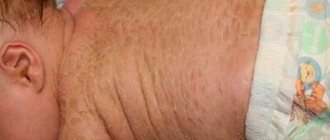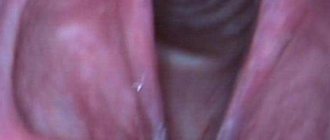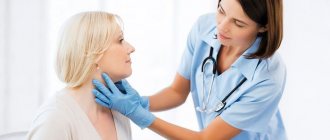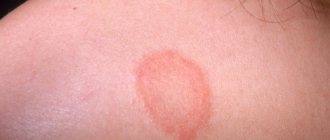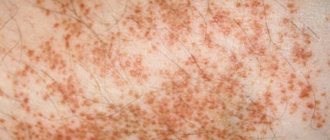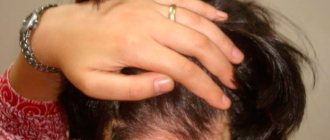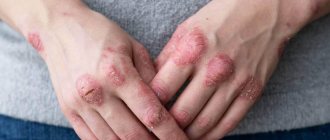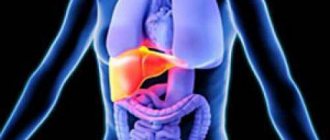Skin diseases are various conditions associated with damage to the skin, hair and nails, making them a very large and diverse pathological group.
Some skin conditions are mildly annoying, others are painful and even disfiguring. Hair damage and visible facial diseases are especially unpleasant. Without treatment, skin pathologies often develop into more serious diseases, so at the first symptoms of skin diseases, you need to make an appointment with a dermatologist.
Features of skin diseases
The content of the article
Skin pathologies
Skin diseases have different causes and course, but they have one thing in common - they often irritate patients more than any other pathology. A woman will put up with a stomach ulcer faster than acne. The most problematic are diseases of the scalp and pathologies with symptoms appearing on the face and hands.
Skin diseases can occur in the form of spots, papules, blisters, cysts, hematomas, blisters, erythema or pustules. They may be accompanied by itching, burning of the skin and pain. The most common skin conditions include allergic reactions, athlete's foot (fungus), and acne.
In turn, scalp diseases most often manifest themselves as dandruff and excessive hair loss, which leads to alopecia. Nail diseases cause severe inflammation.
Skin diseases can have various causes. The most common infections:
- parasitic;
- viral;
- bacterial;
- fungal.
There are also allergic and autoimmune skin diseases - they are not transmitted to other people.
Symptoms
The external manifestations of pyoderma depend on the depth of damage to the skin, the causative agent of the infection and other factors. Many dermatitis manifests itself in several types of skin formations at once. Additional symptoms may be due to the underlying cause of the pathology and the effect of bacterial toxins on the body.
Symptoms of body intoxication:
- dizziness and weakness;
- nausea and vomiting;
- sleep disturbance;
- increased body temperature;
- decreased appetite;
- headache;
- chills.
If the symptoms listed above appear, you should immediately consult a doctor. The infection that causes pyoderma can spread through the blood and damage internal organs. Self-removal of skin lesions increases the risk of sepsis.
Classification of skin diseases
Types of skin, hair and nail diseases are classified based on the International Statistical Classification of Diseases and Related Health Problems (Revision 10).
The International Classification of Skin Diseases does not cover certain parasitic and infectious skin diseases (such as, for example, rosacea, athlete's foot, lice, herpes, viral and genital warts), as well as birth defects, systemic connective tissue diseases and skin cancer. But they are also treated by a dermatologist.
In the latter case, for example, a dermatologist diagnoses:
- basal cell skin cancer;
- squamous cell skin cancer;
- skin melanoma;
- skin adenocarcinoma;
- recurrent nodular fibroma;
- Kaposi's sarcoma;
- Bowen's disease;
- extra-malignant Paget's disease (Paget's skin cancer).
Diagnostics
To undergo the examination, you must make an appointment with a dermatologist. The doctor will ask the patient about complaints and study medical history to identify risk factors for the disease. The next stage of diagnosis is an initial examination of damaged skin. The dermatologist evaluates the shape and size of the ulcers, and also determines the depth of tissue damage. To clarify the cause of pyoderma and the severity of the patient’s condition, instrumental and laboratory examinations are prescribed.
Additional diagnostic methods:
- Dermatoscopy is a method of visual examination of areas of tissue damage. To determine the type of disease, the doctor uses an optical or digital device that allows you to repeatedly enlarge the image (photo). Dermatoscopy is used to search for specific signs of different types of pyoderma and differential diagnosis.
- Microbiological examination of the contents of blisters, boils and other pathological structures. The doctor carefully punctures the membrane of the bladder and collects the exudate in a sterile container. In the laboratory, specialists inoculate the material on various nutrient media to identify the causative agent of the disease. After specifying the type of causative agent of dermatitis, specialists conduct a test for the sensitivity of microorganisms to antibiotics. Bacterial culture is the most reliable way to diagnose the infectious form of the disease.
- Blood analysis. In the treatment room, a nurse collects venous blood and sends the material to the laboratory. First of all, specialists evaluate the ratio and quantity of blood cells. An immunological test can detect signs of an autoimmune disease. Also, if necessary, serological diagnostics are carried out: specialists look in the blood for specific antibodies produced by the body in response to infection. It is often necessary to exclude a sexually transmitted infection.
In case of nonspecific symptoms, the doctor must exclude the presence of other diseases with similar symptoms. For this purpose, differential diagnosis of toxicerma, epidermolysis bullosa, pemphigus vegetans and fungal skin lesions is carried out. The presence of HIV infection is excluded. If necessary, a consultation with an immunologist, allergist, rheumatologist and infectious disease specialist is scheduled.
Infections of the skin and subcutaneous tissue
The most common skin conditions are changes resulting from allergic reactions, acne, rosacea, atopic dermatitis, psoriasis and mycosis:
- staphylococcal skin burn syndrome - neonatal bullous impetigo, Ritter's disease;
- impetigo;
- skin abscess;
- cellulite;
- inflammation of the nail shaft;
- acute lymphadenitis;
- pilonidal cyst;
- other local infections of the skin and subcutaneous tissue - purulent dermatitis, erythematosis.
How to eat healthy
Nutrition is of particular importance as it affects metabolism, the disturbances of which underlie the disease. It is useless to treat psoriasis without following a diet. Important: in the patient’s diet, 70% should be products of plant origin and only 30% should be animal products. Recommended to use:
- any fruits and vegetables (fresh, boiled, stewed) except those prohibited;
- fresh juices; Citrus juices are especially useful; lemon juice can be used as a salad dressing;
- more clean water.
Limit consumption (no more than a few times a week):
- lean meat and fish;
- low-fat cottage cheese and fermented milk products;
- cereals;
- some fruits and berries: plums, currants, cranberries, blueberries.
Exclude from the diet:
- fat meat;
- fatty dairy products;
- sweets, baked goods;
- vegetables from the nightshade family: tomatoes, eggplants, hot and bell peppers;
- all spicy, sour, smoked, fried, canned foods;
- drinks: sweet soda, cocoa, strong coffee, tea, alcohol.
Papulo-exfoliative diseases
- Psoriasis;
- general (plaques and cystic psoriasis);
- generalized pustular (impetigo, herpetiformis, von Zumbusch disease);
- constant pustular inflammation of the extremities;
- pustular psoriasis of the hands and soles;
- joint psoriasis - other forms of psoriasis (fold psoriasis);
- psoriasis, incl. Mucha-Habermann disease
- Gibert's pink dandruff;
- lichen planus;
- other papulo-exfoliative diseases - red follicular dandruff, lichen planus, striatus, streptococcus red, Gianotti-Crosti disease.
Diseases of the skin and subcutaneous tissue associated with irradiation
Skin redness
- Sunburn;
- other acute skin lesions caused by ultraviolet radiation (drug phototoxic reaction, drug photosensitizing reaction, photocontact dermatitis, solar urticaria, polymorphic rash in the light);
- skin lesions caused by chronic exposure to non-ionizing radiation - actinic keratosis associated with solar radiation (senile, solar), actinic reticuloid, striated skin of the neck, rhomboid, skin atrophy, elastic relaxation of the skin, actin granuloma, other skin changes caused by chronic exposure to non-ionizing radiation (farmer's skin, sailor's skin, solar dermatitis);
- radiation dermatitis.
Pigmentation changes
Pigmentation disorders include depigmentation (loss of skin color) and hyperpigmentation (accumulation of skin color). Depigmentation can be caused by chemicals such as hydroquinine, phenol (and its derivatives), arsenic and mercury compounds. It can also be caused by ionizing and ultraviolet radiation, as well as thermal or physical trauma.
Hyperpigmentation can be caused by mineral oils, halogenated hydrocarbons, arsenic and various pharmaceuticals.
Diseases of the skin appendages
- Nail diseases - ingrown toenail, nail plate avulsion, clawing, nail dystrophy, Beau's lines [groove], yellow nail syndrome;
- alopecia areata;
- androgenetic alopecia;
- hair loss without scars - telogen hair loss, anagen hair loss, follicular mucinosis;
- cicatricial alopecia - alopecia areata, lichen planus (lichen planus), alopecia, folliculitis, perifolliculitis;
- uneven hair color and structure - hair fragility, change in hair color;
- hypertrichosis (hirsutism, acquired hypertrophy, limited hypertrophy, hypertrichosis (polytrichia);
- acne - regular, focused, smallpox-like, tropical, children's;
- rosacea;
- carpal bellows formations of the skin and subcutaneous tissue - epidermal cyst, hair cyst, multiple sebaceous cysts;
- other diseases of the hair follicle - keloid acne, pseudodermal purulent folliculitis, multiple abscesses of the apocrine glands in the armpit, fig fever;
- diseases of the sweat glands - increased sweating, bad smell or color of sweat, lack of sweat;
- Apocrine gland diseases - excessive sweat, colored sweats, Fox-Fordyce disease.
Other diseases of the skin and subcutaneous tissue
- Albinism;
- other pigmentation disorders - excessive post-infectious pigmentation, chloasma, freckles, dark spots, lenticular spot, creeping hemangioma;
- seborrheic wart - dark papular dermatitis, Leser-Trélat disease;
- dark keratosis - conspicuous and reticular papillary;
- calluses and corns;
- other forms of thickening of the epidermis - acquired fish scales, acquired keratosis (keratoderma) of the hands and soles, keratosis (hands and feet), dry skin, cutaneous horn;
- violations of transepidermal elimination - follicular and parietal keratosis penetrating the skin [Kirl's disease], reactive perforated collagenosis;
- purulent gangrenous dermatitis - gangrenous dermatitis, purulent ulcerative dermatitis;
- bedsore;
- atrophic skin diseases - sclerosis and atrophic lichen, Schwenninger-Buzzi skin atrophy, Jadasson-Pellisari skin atrophy, Pasini and Pierini skin atrophy, scarring and fibrosis of the skin;
- skin stretch marks;
- hypertrophic skin diseases - keloid scar (hypertrophic scar, keloid);
- granulomatous diseases of the skin and subcutaneous tissue - incl. granuloma annular, facial granuloma (eosinophilic granuloma);
- lupus erythematosus - discoid lupus erythematosus, subacute cutaneous lupus erythematosus;
- other limited connective tissue diseases - scleroderma, linear scleroderma, digital sclerosis, Gottron's papules, skin vascular atrophy.
Any skin diseases require careful diagnosis and treatment, therefore, if you notice pimples, irritation, changes in skin color or other symptoms on the skin, you need to make an appointment with a good dermatologist in a modern clinic in St. Petersburg.
ONLINE REGISTRATION at the DIANA clinic
You can sign up by calling the toll-free phone number 8-800-707-15-60 or filling out the contact form. In this case, we will contact you ourselves.
If you find an error, please select a piece of text and press Ctrl+Enter
Treatment
The method of treatment depends on the depth of damage to the integumentary tissue, the identified cause of pyoderma, the extent of the process and the complications that arise. Most often, local treatment is sufficient. The doctor opens the ulcers, removes the exudate and treats the affected skin with antiseptic solutions. If necessary, topical antibiotics are used. A serious condition, accompanied by intoxication of the body and damage to internal organs, requires hospitalization.
Additional treatments:
- Prescribing antibiotics in the form of tablets, intramuscular or intravenous injections. Typically, such treatment is necessary for systemic infection. Before receiving the results of a drug sensitivity test, the doctor prescribes broad-spectrum antimicrobial agents.
- Use of corticosteroids in the form of topicals or tablets. These medications are necessary to suppress the autoimmune process and relieve inflammation. If necessary, immunomodulators and cytostatic medications are prescribed.
- Physiotherapy. The effect of ultra-high frequency electric current on the skin improves the condition of the tissues.
- Prescribing additional medications, such as antihistamines and painkillers.
During treatment, your doctor may prescribe a special diet and vitamin supplements. When prescribing a course of antibiotics, the specialist constantly monitors the patient’s condition.
